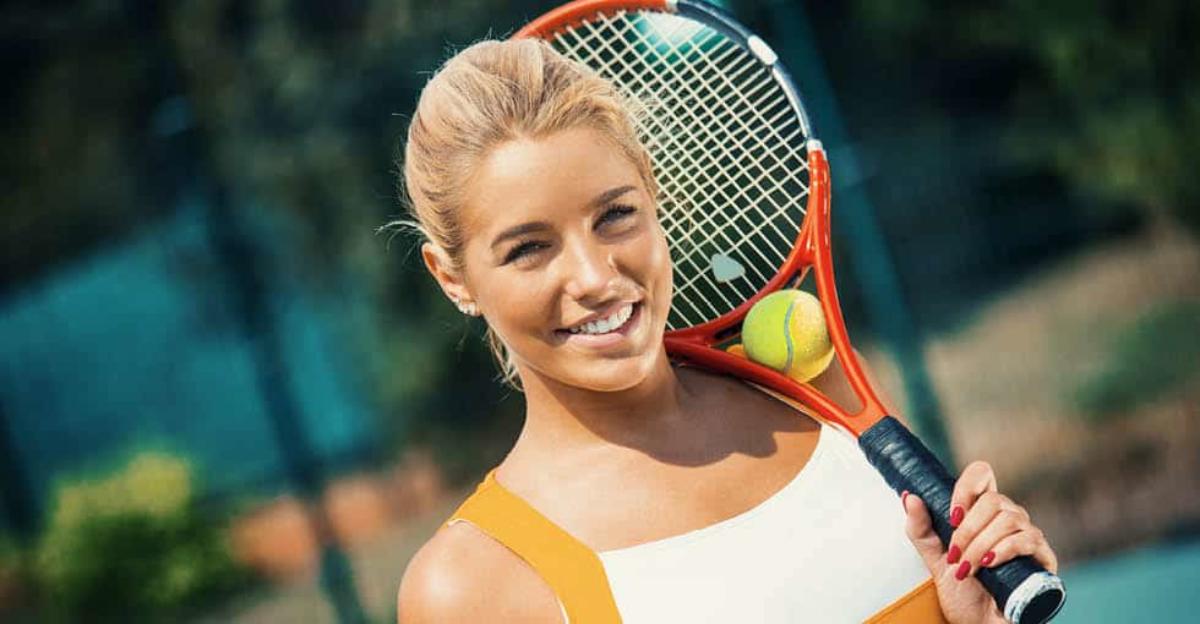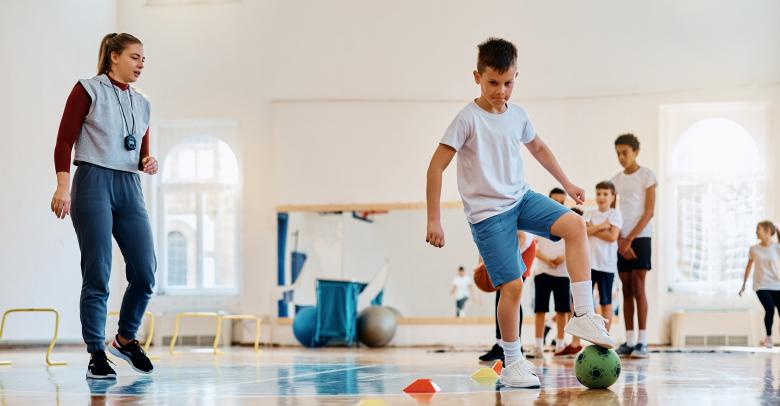Tennis is an ideal sport to add to any High School PE curriculum. It is active, fun, challenging, requires focus and strategy, and has many physical and health benefits. Tennis and all of its lead-ups address many standards. Tennis is a lifetime activity, develops hand-eye coordination, agility, strength, aerobic capacity, teamwork, has a lot of its own terminology and etiquette, is open for many strategies, is relatively safe, and allows for social opportunities. Most high schools have tennis teams, so there are often many courts that sit idle during the school day, which allows for tennis to be played in PE.
Here are a few tips for teaching tennis in your High School PE program:
- Although it is nice to have a racquet for each student, there are many drills and activities you can do with half that. There are also many substitutes that can be used, such as racquetball racquets and pickleball paddles.
- Similarly, just one tennis ball per pair is necessary, but there are other types of balls that work here too, such as whiffle and dense foam. If you have the means, it is nice to supply a mix of densities, bounciness, speed and size of balls.
- Use 5-gallon buckets to hold many balls at each court for when students are practicing specific skills such as serving, forehand, backhand or lobs. This allows for many trials before it’s time to run around, pick-up and re-supply.
- Start small. Create four courts in each tennis court by dividing each half into two mini-courts going sideways. Use either portable, low nets or cones to create a net running perpendicular to the permanent net and through the midline of each side. This allows for 8-16 students per court to quickly get into gameplay and fun.
- Use shorter, lighter racquets for your beginners. They will have much more success and fun at the beginning, which allows them to get hooked on tennis before getting frustrated.
- Depending on the skill levels in the class, you may want to keep some of the courts regulation size and allow those with higher skills to practice and play there.
- For all of these factors: court size, ball speed, racquet size/type, it’s best to allow students to choose their own level.
Here are three lead ups and drills that will help your students of all levels build tennis skills:
Dink ‘Em
The object is to warm up forehand and backhands in a slower, shorter version.
- Begin with two players on each side of the net standing just inside the service court; each player with a racquet/paddle and one ball per court.
- Play begins by drop-serving the ball and keeping a rally going inside the service court (or if using smaller courts, the half of the court closest to the net).
- Hit short, controlled strokes that bounce inside the service court. Forehands and backhands will be slow and short to practice footwork and swings in a smaller, more controlled manner before moving back.
- How many hits can your group make in a row without a miss?
- Can you hit in a pattern (i.e. down the line, cross-court, down the line, and cross-court) until all four players have hit the ball at least two times? How many times can you follow the pattern?
Forehand/Backhand Drill
The object is to practice forehand and backhand strokes in a controlled environment.
- Use the full tennis courts for this drill. Place two feeders on one side of the net (one right, one left, with a bucket of balls between them), two Hitters at the baseline across the net, two Shadows five paces behind the hitters, and two Retrievers behind the Feeders, for a total of eight students per court. Each student with a racquet or paddle (if you don’t have enough, just use two for the Hitters.)
- Feeders feed, using tosses (or controlled hits from their racquet if they are able) to the Hitters in front of them. Hitters on the right side of the court are practicing forehands and those on the left side are hitting backhands (if they are left-handed, the reverse). Hitters keep feet moving and in ready position between each hit. Hitters are given five tosses. Shadows do the same moves as the Hitters, but don’t hit the ball. Retrievers are in charge of retrieving five balls each (if balls don’t make it across the net, Hitters get those).
- After five tosses, all rotate: Retrievers to Tossers to Shadows to Hitters to Retrievers. Any ball not hit over the net shall be picked up by Hitters on their way to becoming Retrievers.
- After going through all rotations three times on one side, switch to the opposite side to practice the other stroke.
- Tossers, can you toss the ball under control toward the sideline between the service and baseline each time?
- Hitters, can you hit the ball from low to high and with follow-through each time?
- Retrievers, can you collect each ball as it comes onto your side of the net?
- Shadows, can you keep your feet moving, racquet in ready position, and shadow your Hitter?
- How quickly can you get through one rotation?
- How many rotations can you move through before the signal? Count how many hits go over and in the court.
Tennis Quick Play Tournament
The object is to play a modified tennis game and build strategies and skills.
- Two pairs per court, each student with a racquet and three balls per court.
- Pairs play side-by-side to begin (can move to net and baseline one formation later).
- Rock, Paper, Scissors to see who serves.
- First server is player on right side. Serve with a drop ball, underhand serve to opposite side service court. May have two chances to serve in.
- Continue rally until ball is not returned.
- Server stays server for the whole game, which is first to four points.
- Switch sides of the net every two games.
- Continue play until signal (about five minutes). Team that is ahead moves up one court, team that is behind moves down one court. If tied, use Rock, Paper, Scissors to determine a leader.
- Continue play until time is up.
Check out Sportime.com for paddles, racquets, all types of balls, and mini-nets!






Leave a Reply